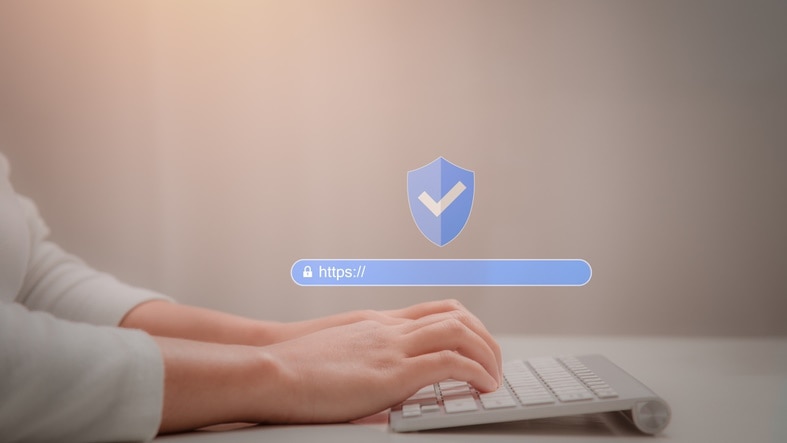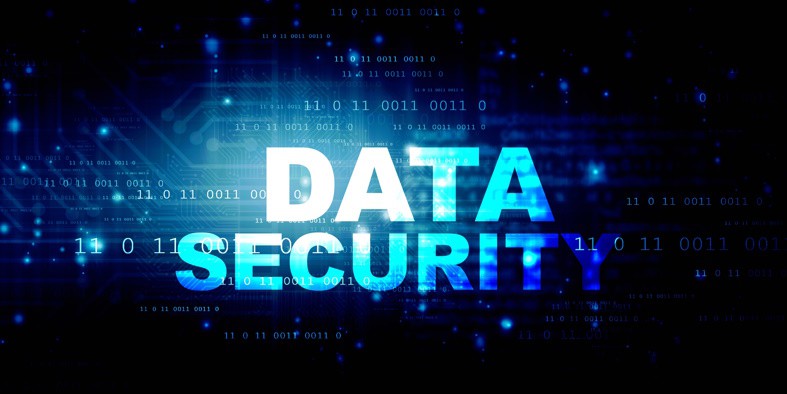Developing secure enterprise websites requires implementing robust security measures. Strong authentication methods, such as multi-factor authentication and single sign-on, are crucial for safeguarding user accounts. HTTPS should always be used to encrypt data during transmission. Regular security audits and penetration tests are essential to identify vulnerabilities. Data must be secured with strong encryption, and role-based access controls determine who can access sensitive information. Software updates are necessary to address security vulnerabilities. Firewalls and web application firewalls (WAFs) should be deployed to block malicious traffic. User permissions need to be managed with care, and a comprehensive security strategy and incident response plan should be developed. Focusing on these areas significantly enhances the security measures of enterprise websites.

Table of Contents
Implement Strong Authentication
A cornerstone of website security is strong authentication. Robust systems to protect user data and maintain trust are essential. Implementing multi-factor authentication (MFA) is a critical strategy. Multi-factor authentication requires both a password and a secondary factor, such as a phone for a verification code, thereby adding an extra layer of security to deter unauthorized access.
Effective password management is a fundamental element of secure authentication. Users should be encouraged to create complex, unique passwords for each account. The integration of password managers can facilitate this process, enabling users to maintain strong credentials without the burden of memorization.
Biometric verification, including fingerprint or facial recognition, provides an advanced method of authentication. Biometric verification is both user-friendly and secure, as biometric data is unique to each individual and challenging to replicate.
Single sign-on (SSO) simplifies the login process by reducing the number of credentials users need to remember. Single sign-on allows users to access multiple applications with one set of credentials, enhancing both security and convenience.
Use HTTPS Everywhere
The importance of securing data in transit cannot be overstated, and implementing HTTPS throughout a website is a fundamental measure. HTTPS utilizes SSL Certificates to encrypt data, ensuring sensitive information remains protected. This not only enhances the site’s security but also reinforces user trust, as visitors can interact with the website with confidence that their data is secure.
Key factors in adopting HTTPS are outlined below:
| Factor | Importance | Considerations |
| SSL Certificates | Validates the website’s identity and encrypts communications. | Select a reputable Certificate Authority (CA). |
| Encryption Standards | Protects data during transmission. | Ensure the use of robust protocols like TLS 1.2 or 1.3. |
| Browser Compatibility | Ensures universal access to the secure site. | Test the site on all major browsers. |
| User Trust | Establishes confidence in the website’s security. | Display security badges prominently. |
| Performance Impact | May slightly affect load times. | Optimize the site to reduce latency. |
Testing browser compatibility is crucial; the site should be verified across various browsers to ensure a seamless user experience. Although HTTPS might introduce a slight performance impact, strategic website optimization can alleviate potential delays. Prioritizing HTTPS fosters a secure environment, providing reassurance to users and safeguarding their data.
Regular Security Audits

Regular security audits are crucial for maintaining website integrity. Overlooking these audits can leave websites vulnerable to potential threats. A thorough vulnerability assessment is the first step in identifying weak points within the system, highlighting areas where attackers could exploit the website. Identified vulnerabilities should be addressed by integrating risk management strategies, prioritizing issues based on their potential impact.
Ensuring website compliance with industry-specific standards is vital. Compliance not only aligns with legal requirements but also provides a structured framework for securing the website. Implementing threat modeling helps anticipate potential attack scenarios and develop effective defenses, offering a proactive approach to prevent costly breaches.
Penetration testing is an indispensable component of security audits, simulating real-world attacks to evaluate website defenses. Conducting these tests regularly uncovers hidden vulnerabilities that might otherwise remain undetected.
Penetration tests offer a comprehensive overview of the website’s security posture and guide necessary improvements. When executed correctly, regular security audits strengthen websites against evolving threats.
Secure Data Storage
Ensuring secure data storage is critical for protecting sensitive information on websites. Strong encryption standards must be implemented to safeguard data both at rest and in transit. Robust algorithms that meet modern security benchmarks are essential for this purpose.
Data classification is another important aspect; categorizing information based on sensitivity helps prioritize protection for the most critical data.
Access controls play a fundamental role in preventing unauthorized access. Role-based access controls ensure users only access data they’re authorized to view, minimizing the risk of accidental or deliberate data breaches. Regular reviews and updates of these controls are necessary to accommodate any changes in personnel or roles within an organization.
Reliable backup solutions are crucial for restoring data in case of a breach or loss. Regular testing of these solutions verifies their effectiveness.
Additionally, staying informed about compliance regulations relevant to specific industries is important. Adhering to these regulations not only protects data but also ensures legal compliance, avoiding significant fines and reputational damage.
Prioritizing secure data storage serves as a safety net against potential threats.

Keep Software Updated
Keeping software updated is crucial for website security. Regular software patches and security updates are essential, as hackers often exploit known vulnerabilities in outdated software. Utilizing version control ensures that website software remains current and secure.
Dependency management is vital for maintaining website security. Websites often rely on third-party libraries and frameworks. Effective dependency management ensures these components are up-to-date, reducing potential security risks.
Automated tools assist by notifying about available updates and facilitating their swift implementation.
Attention is required for every plugin, extension, or module used on a website. Neglected updates increase vulnerability to attacks.
Implementing automated tools for routine checks and updates minimizes the risk of human error.
Monitor Network Traffic
Enhancing website security requires rigorous network traffic monitoring. Observing data movements within a network is crucial to identify potential threats early. Robust network monitoring tools offer comprehensive insights into network health and activities.
These tools facilitate traffic analysis techniques, enabling the identification of patterns and the detection of unusual behavior indicative of security breaches. Incorporating anomaly detection methods into a monitoring strategy is vital. Anomaly detection methods alert deviations from standard traffic patterns, which could indicate unauthorized access or data leaks.
Packet inspection strategies provide a deeper examination of data packets traversing the network, ensuring malicious content is intercepted before causing harm. Establishing real-time alert systems is essential for prompt threat response. Real-time alert systems deliver immediate notifications about suspicious activities, allowing for swift protective actions for website security.
A proactive approach to network traffic monitoring significantly reduces cyberattack risks and ensures enterprise website safety. Vigilance and prioritizing network traffic monitoring are critical components of a robust security protocol.
Apply Firewalls and WAFs

Firewalls and Web Application Firewalls (WAFs) are fundamental in website security. They serve as primary defenses against cyber threats, maintaining application security. Proper firewall configurations and WAF deployment are critical for safeguarding online assets.
Defining the roles of these tools provides clarity. Firewalls filter traffic at the network level, while WAFs focus on the application layer. Employing both strategically establishes a strong security perimeter.
Steps to enhance website security are listed below:
- Firewall Configuration: Block unauthorized traffic and permit only legitimate requests.
- WAF Deployment: Inspect incoming data packets for threats such as SQL injections and cross-site scripting.
- Threat Intelligence Utilization: Stay informed about the latest vulnerabilities and adjust defenses accordingly.
- Traffic Filtering Implementation: Monitor, detect, and redirect suspicious activities.
- Regular Security Protocol Updates: Address emerging threats and bolster system resilience.
Manage User Permissions
The importance of managing user permissions for internal security can’t be overstated. Role-based access control ensures that individuals have access only to the resources necessary for their job functions, reducing the risk of both accidental and intentional data breaches.
Defining user roles within an organization involves categorizing positions based on responsibilities and required access levels. Distinct permission levels should be established for each role to prevent unnecessary exposure of sensitive information.
Regular reviews and updates of these permission levels are crucial to accommodate changes in job roles or responsibilities. This proactive approach to privilege management contributes to a secure environment as the enterprise evolves.
Implementing access control measures to monitor information access is essential. Logging access attempts and generating alerts for unauthorized access can effectively track user activities and swiftly identify potential threats.
Diligent management of user permissions enhances an enterprise’s security posture and safeguards data integrity. Precision and regular updates are vital to maintaining strict control over user access.
Develop a Comprehensive Srategy
Developing a comprehensive strategy for website security is essential for safeguarding digital assets. Ensuring that an enterprise website remains resilient against evolving threats requires a methodical approach. A thorough risk assessment is crucial to identify vulnerabilities and prioritize areas needing immediate attention.
Threat modeling is used to anticipate potential attacks and devise strategies to mitigate them, allowing organizations to stay ahead of cybercriminals. Robust security policies must be established to manage and protect sensitive information. These policies should be clear, actionable, and consistently enforced.
Employee training is a critical component; equipping the team with the knowledge and skills to identify and respond to security threats effectively is vital. Training programs should be regularly updated to keep pace with the latest threats and technologies. For businesses looking to strengthen their overall defense mechanisms, focusing on enterprise security provides a robust framework for managing risks, safeguarding assets, and ensuring compliance with industry standards.
Compliance with industry standards and regulations is necessary to protect an organization legally and strengthen its security posture.
Key elements to implement include:
- Regular risk assessments to identify new vulnerabilities.
- Development of threat models to predict potential attack vectors.
- Creation and enforcement of detailed security policies.
- Ongoing employee training for awareness and response.
- Adherence to compliance standards to meet regulatory requirements.

Develop an Incident Response Plan
An effective incident response plan is critical for maintaining robust cybersecurity. Incident detection techniques must efficiently alert organizations to potential security breaches. These techniques require precise calibration to reduce false positives while ensuring no legitimate threats are overlooked.
Immediate action by the response team upon incident detection is crucial. This level of preparedness is achieved through extensive training, ensuring every team member comprehends their specific role in managing cybersecurity events.
Communication protocols form the backbone of an incident response plan. These protocols ensure that all organizational levels, from IT personnel to executive management, are informed about when and how to communicate during a cybersecurity incident. Establishing unambiguous communication guidelines prevents misunderstandings and ensures a synchronized response.
Conducting a thorough post-incident analysis is vital after resolving a security incident. This analysis provides insights into the incident’s nature, evaluates the response’s effectiveness, and identifies opportunities for improvement.
Engaging stakeholders in this analysis ensures that lessons learned and improvements are disseminated throughout the organization. A comprehensive incident response plan focuses not only on reaction but also on the continuous enhancement of the organization’s security posture.
Frequently Asked Questions
How Can User Education Enhance Website Security?
User education enhances website security by focusing on several key areas. Password management education ensures users create strong and unique passwords, reducing the risk of unauthorized access. Phishing awareness training helps users identify and avoid deceptive attempts to steal sensitive information. Secure communication practices are emphasized to protect data during transmission. Data privacy education informs users about safeguarding personal and sensitive information. Incident response preparation equips users to act swiftly and effectively in the event of a security breach. Empowering users in these areas contributes significantly to overall website security.
What Role Does Website Design Play in Security?
The design of a website plays a crucial role in ensuring security. Secure coding practices are essential to prevent potential breaches and unauthorized access. Adhering to responsive design principles and accessibility standards enhances user experience while maintaining security protocols. Conducting regular vulnerability assessments is vital to identify and address weaknesses, ensuring the website remains resilient and protected against various threats.
How Do Third-Party Integrations Affect Website Security?
Third-party integrations significantly impact website security by introducing potential vulnerabilities and risks. These integrations can compromise data privacy and expose plugin vulnerabilities, leading to security breaches. Implementing strict access controls is crucial in safeguarding a website from such threats. Navigating compliance challenges is also essential to ensure that a website remains secure and trustworthy.
How Can AI Tools Assist in Securing Enterprise Websites?
AI tools can significantly enhance enterprise website security. AI-driven monitoring provides real-time insights into potential security threats. Predictive threat analysis anticipates possible vulnerabilities before they are exploited. Automated vulnerability scanning identifies and addresses security gaps efficiently. Behavioral anomaly detection monitors user activity to identify unusual patterns that may indicate a security breach. Intelligent incident response systems enable proactive measures to address potential threats swiftly. These AI capabilities collectively fortify website security, ensuring robust protection against cyber threats.
What Are the Best Practices for Secure API Management?
What are the best practices for secure API management? The most effective strategies for managing secure APIs include utilizing robust API authentication methods, implementing rate-limiting strategies, ensuring data encryption, deploying security monitoring tools, and integrating API gateway solutions to protect digital assets.
Conclusion
Securing an enterprise website requires strategic planning and diligent execution. Prevention is crucial in cybersecurity. Implementing robust authentication methods and employing HTTPS protocols are essential for protecting sensitive information. Regular security audits and prudent management of user permissions enhance data protection. Maintaining updated software, utilizing firewalls, and developing a comprehensive incident response plan are critical components of a secure digital infrastructure. These measures collectively safeguard an enterprise’s digital assets effectively.
